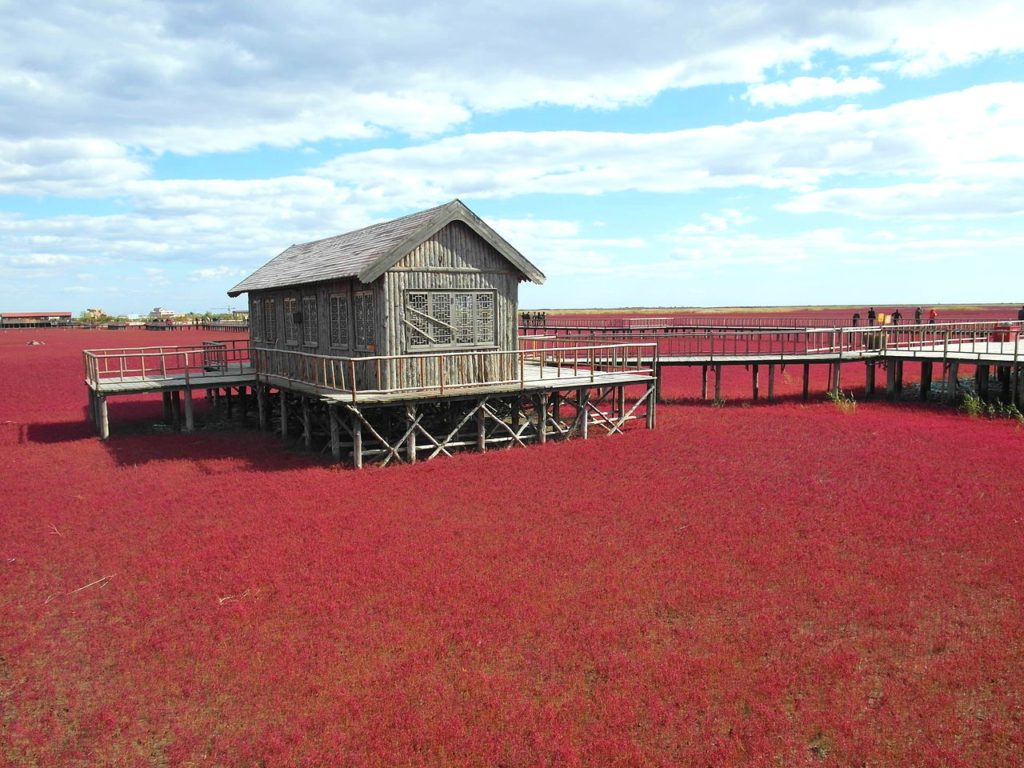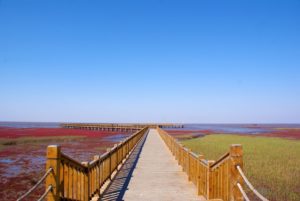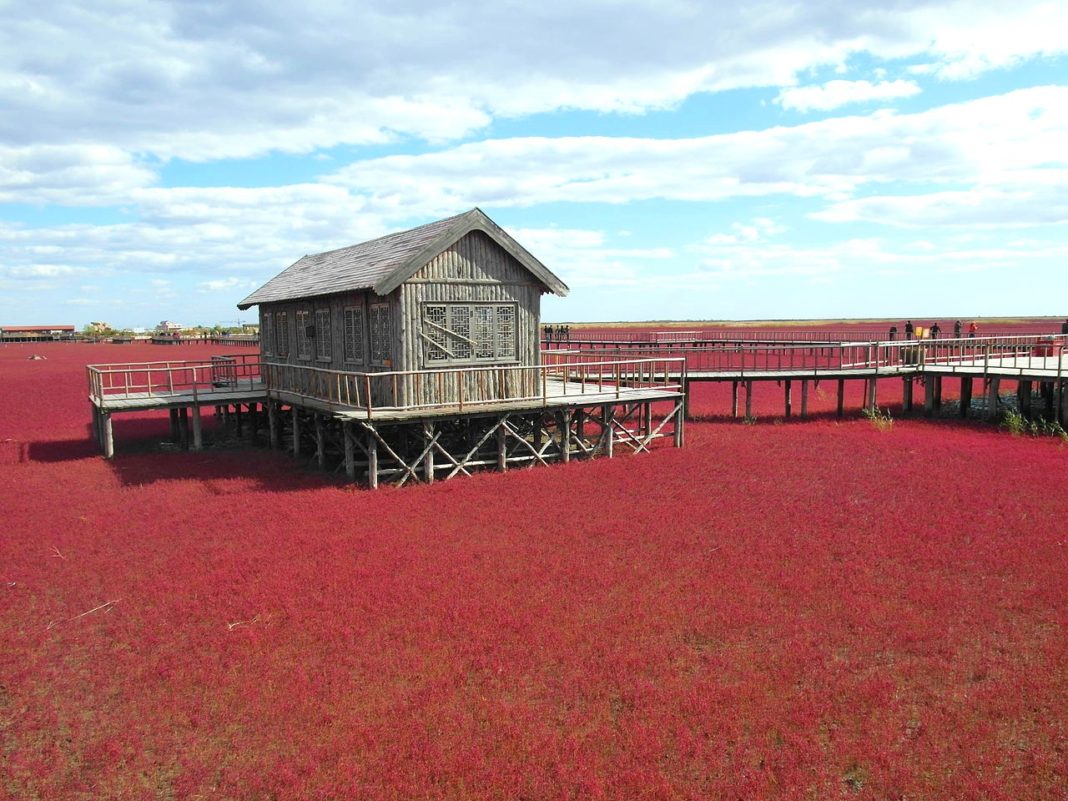The unusual color of the vegetation makes it one of the most unique beaches in the world and without a doubt one of the most fascinating, giving visitors a chromatic impact of the incredible effect.

One of the rarest sights in the world, China’s Panjin Red Beach lies within an enormous wetland on the bank of the Liaohe River in Liaoning Province. This 132 square-kilometer coastal nature reserve is home to over 260 species of birds, 399 other animal species, and, of course, a landscape that is almost unreal.
The rich red color comes from a plant called seepweed. Scientifically known as Suaeda salsa, its life cycle begins in April or May. This particular species is one of the rarest forms of seepweed in the world, as seepweed does not typically change color at all.

But this one does. It turns a striking jade green in spring and summer before transforming into bright red from August to October. As winter nears, it turns purple before dying. This otherworldly, unique chemical reaction is due to the wetland’s position near the coast, where the soil is both highly saline and highly alkaline.
The Suaeda genus thrives in salty environments, a quality known as halophytic. Sediment from the Liaohe River nurtures seepweed growth. Some halophytes are alkaline-tolerant succulents, absorbing the many nutrients and chemicals in the water and soil, much like the seagrass on the ocean floor. Except this one’s alkaline tolerance turns it red.
Its uncanny ability to survive in harsh environments intrigues scientists, but even more exciting is the plant’s potential as a fuel. Most academic papers on biodiesel stem from the research done on Suaeda.
The Red Beach is also home to the endangered Red-Crowned Crane, the rarest crane species on earth. As a result, it has become somewhat of a bird sanctuary for other species as well, such as white storks and Black Beaked Gulls. It is also a popular pit stop for birds migrating from Eastern Asia to Australia. The wetland’s abundance of fish and mitten crabs, but most importantly, its undisturbed surroundings make it both a perfect stopover and a long-term residence.
According to Wikipedia















